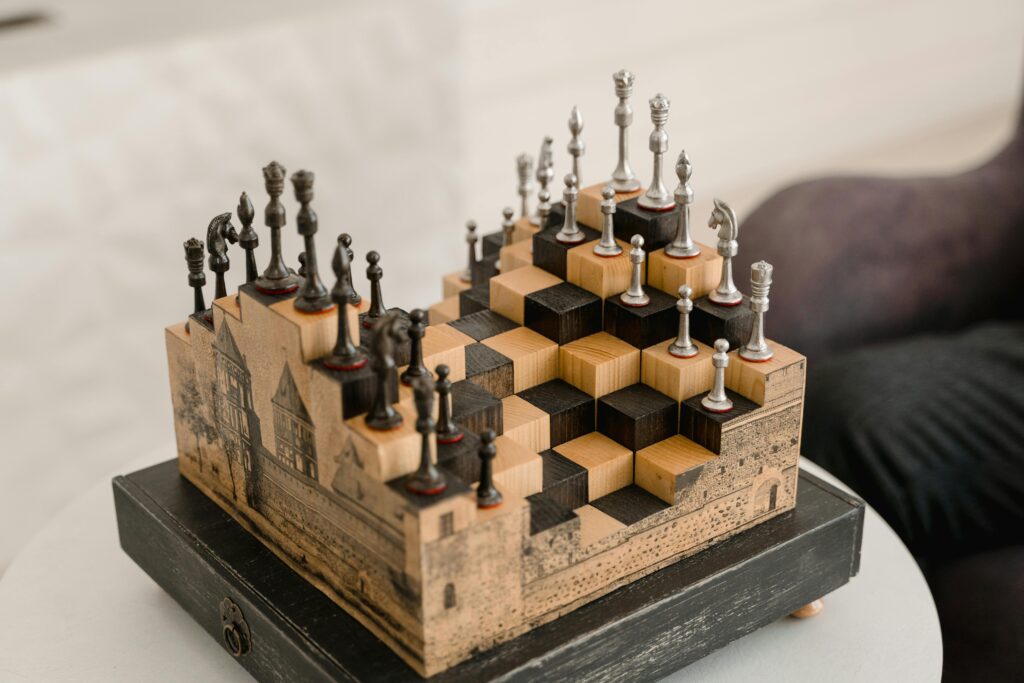Custom Chess Boards: Crafting Your Perfect Game
Custom chess boards transform a classic pastime into a deeply personal statement. Whether you seek to honor family heritage, embody your design ethos, or create a one-of-a-kind gift, a bespoke board offers limitless possibilities. This guide explores why custom boards matter, your options for personalization, the design process, budgeting, and care—empowering you to bring your ideal board to life.
Why Choose a Custom Chess Board Mastercrafted,Stunning
Investing in a custom chess board elevates both your game and your surroundings. Off-the-shelf sets follow standardized designs, but a bespoke board allows you to:
- Reflect personal style: Integrate favorite woods, colors, or patterns to match your décor.
- Celebrate milestones: Engrave commemorative dates, family crests, or meaningful symbols.
- howcase craftsmanship: High-end artisans use techniques like marquetry, metal inlay, and resin art to craft unique masterpieces.
A custom board isn’t just a playing surface—it’s an artistic centerpiece that sparks conversation and pride.
Customization Options
Custom Chess Boards
1. Design & Materials
- Wood Selection: Choose from classic walnuts and maples to exotic padauk, purpleheart, or zebrawood. Each species offers distinct grain, color, and hardness.
- Inlay & Marquetry: Combine woods or metals into intricate patterns—geometric tessellations, floral motifs, or personalized logos.
2. Dimensions & Scale
- Square Size: Tournament-standard 2.25″ squares suit serious play; smaller (1–1.5″) or larger (3″+) options fit decorative or travel boards.
- Board Footprint: Decide between a modest 16″×16″ board, a standard 20″×20″, or an oversized 24″×24″ showpiece.
3. Finish & Accessories
- Surface Treatments: Matte wax finishes accentuate wood grain, while glossy lacquers enhance color depth and protect against moisture.
- Border & Leg Styles: Add carved edges, turned feet, or metal corner guards for a refined profile.
4. Branding & Personalization
- Engravings: Laser-etch names, dates, or quotes along the board’s border.
- Family Crests & Logos: Embed custom emblems into the center or corner squares via metal or wood inlays.
- Color Accents: Use resin or hand-painted inlays to introduce vibrant hues that echo your logo or décor palette.
The Custom Design Process Custom Chess Boards
Custom Chess Boards
1. Consultation & Concept
Start with a detailed briefing. Share inspiration images, material preferences, intended use, and budget. Top artisans often sketch initial concepts and present mood boards to align on style and scope.
2. Mockups & Prototyping
Once the concept is approved, the maker produces digital renderings or scaled prototypes. This phase refines square proportions, material contrasts, and finish options. You may receive small sample inlays or texture swatches to verify color accuracy.
3. Production & Quality Control
After final approval, skilled craftsmen cut, inlay, and assemble the board. During construction, multiple quality checks ensure tight seams, uniform finishes, and flawless surface flatness. Final steps include buffing, sealing, and precision sanding for a smooth, enduring playing surface.
Budget & Timeline Considerations
Custom chess boards span a wide price range depending on complexity and materials:
- Entry-Level Custom ($300–$600): Simple wood combinations, standard dimensions, minimal inlay. Delivery in 4–6 weeks.
- Mid-Tier Artisanal ($600–$1,500): Exotic woods, moderate inlay work, custom engravings. Delivery in 6–10 weeks.
- High-End Bespoke ($1,500+): Complex marquetry, precious metal accents, integrated storage. Delivery in 10–16 weeks or more.
Discuss payment schedules—often 50% deposit, balance on delivery—and clarify return or revision policies before commissioning.
Caring for Your Custom Board
Proper maintenance preserves your board’s beauty and function:
- Regular Dusting: Use a soft microfiber cloth; avoid abrasive materials.
- Wood Conditioning: Apply a light coat of non-silicone wood oil every 3–6 months.
- Avoid Direct Sunlight: Prolonged UV exposure can fade woods and finishes.
- Stable Environment: Keep humidity between 40–55% and temperature between 65–75°F to prevent warping or cracking.
- Gentle Play Practices: Ensure pieces have felt bases and encourage lifting rather than sliding to protect the surface.
Conclusion
A custom chess board is more than a gaming accessory—it’s a personalized work of art and a lasting legacy. By selecting materials, dimensions, finishes, and personalization details that resonate with you, you create a board that enhances your playing experience and enriches your space. Partner with a skilled artisan, embrace the design journey, and soon you’ll hold a masterpiece tailored exclusively to your vision.

